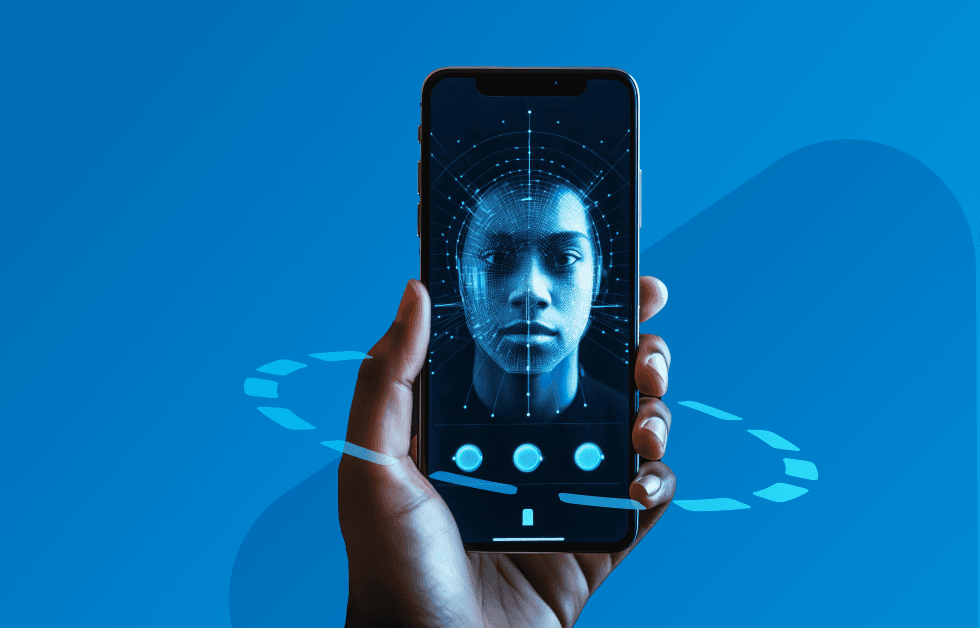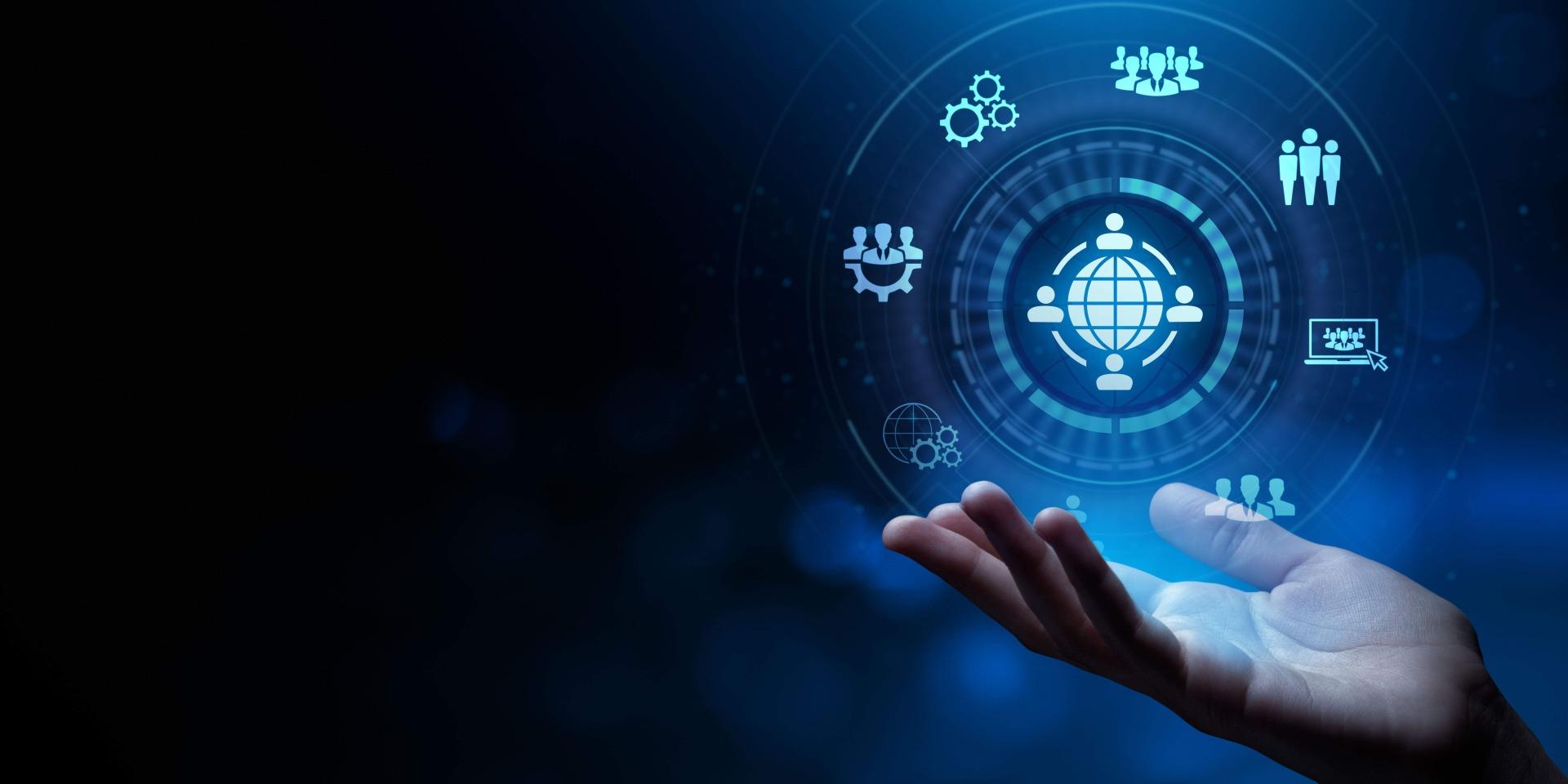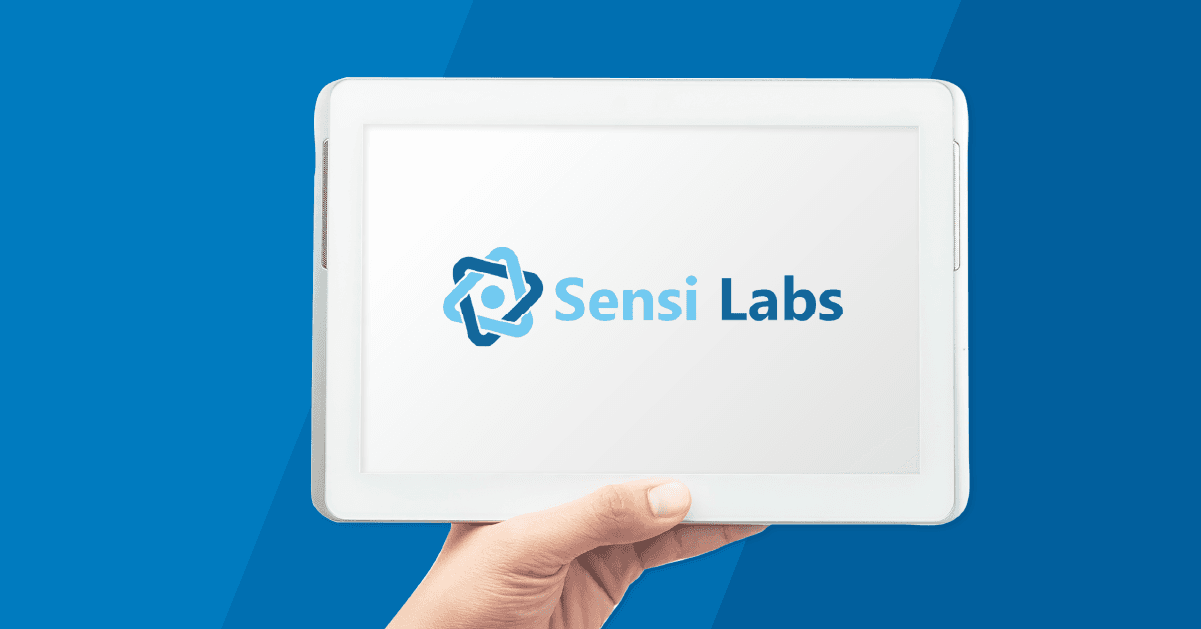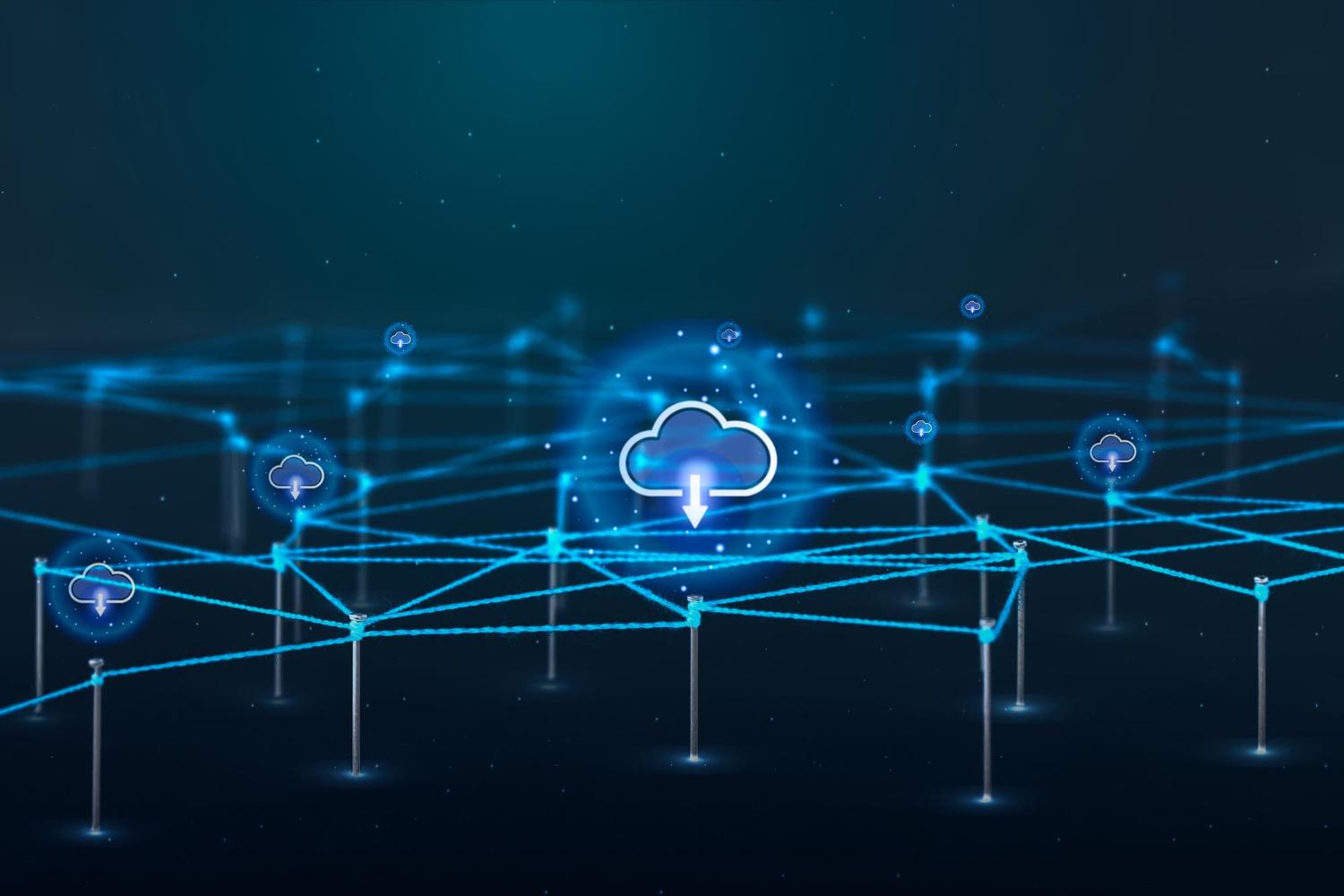Omnichannel
The practical side
Omnichannel - buzzword or game changer?
The word “omnichannel” once became a real buzz word and became really popular in marketing, as a result of which the Internet is now filled to the brim with comprehensive studies on the subject. In my publication today, however, I would like to focus on the practical aspects of implementing the so-called omnichannel strategy with an emphasis on sweat, blood and tears, which, as it usually happens, hide behind beautiful slogans.
So let’s start with what the omnichannel is to me at all. It is a wide concept that refers to trade and customer service in all sales and communication channels: the real world, the Internet and the telephone channel. Is your solution omnichannel? – Ask experts of large consulting companies on their websites, leaving no illusions about the goal they want to achieve in this way. Do you have an omnichannel strategy? – They ask others, presenting their clients’ success stories. I, on the other hand, would rather ask: Do you really want to be “omni”? Do you want to spend money on it? No, not at my service. Change in your own organization. Do you know what is important to your customers?
In my opinion, the answers to these questions are not easy. But they are extremely important. Each market is different and each customer group has its own preferences and preferences. Sometimes a real omnichannel is an over-representation of form over content, as in the case of online coffin sales (shallow market; difficulty in competing with physical, local vendors; the fact that a large proportion of customers are potentially digitally excluded, or even troublesome marketing). However, I think that, despite everything, every seller should be aware of the possibility of gaining and retaining a customer by facilitating access to products, providing a uniform customer experience in all distribution and communication channels or, finally, predictable, professional handling of both the order itself and the related communication (delivery, returns, complaints, product problems, promotions, loyalty programs). The problem here is not a technology platform supporting omnichannel or strategy preparation. The problem is a huge organizational and technological change taking place in the “back office” of the company, in key locations, and it is definitely a problem that can and must be solved. Even the best e-commerce system or call center from the biggest supplier on the market will not make us omnichannel. Being “omni” is much more than that.
After this long introduction, it is time to focus on the promised practical aspects – let’s begin.
Omnichannel strategy
“Omnichannel strategy” is not only confusing, it is simply abused. In most approaches, there is a focus on sales in different channels, the implementation of an online store, and sometimes also customer segmentation and user experience. But let’s summarize it in points.
- Selection and implementation of an online store.
- Providing a uniform user experience.
- Implementation of the call center system and integration with the store, social media, communication channels used.
- Customer segmentation in terms of advertising, loyalty and communication.
- Sales channel management, actively seeking synergies and avoiding cannibalization.
- Start the click-and-collect service.
- Integration of logistic systems, ERP, CRM etc.
These are just a handful of equivalent sentences collected from web sites. It is nothing like a strategy, right? I would recommend that you remember the classic definition of strategy and I, for the purposes of this article, will just remind you in a nutshell that omnichannel’s strategy is, above all, a comprehensive approach to sales and communication based on the synergy of the real world, virtual and telephone. As much and as little. Every organization going beyond the real world should take “a few” moments to formulate such a strategy, think about its feasibility, costs and goals, and then… implement it (and here, attention, I deliberately did not use the word “implement” – in today’s world it is an endless process).
Omnichannel in sales
“Click-and-collect”, a scenario in which a customer purchases a product online and then picks it up at a selected stationary store, was the most successful in omnichannel world. Sounds simple, right?
But it is not easy, because it:
- requires the integration of an online store with a warehouse or ERP system,
- requires the creation and management of customer identity,
- forces omnichannel communication (email, call center, shop assistant),
- enforces a ticketing approach to customer service,
- makes it necessary to develop processes (sales, logistics, payments, communication) also in the “reverse” version, i.e. handling the return processes,
- requires the updating of contracts and regulations.
But, of course, the click-and-collect omnichannel does not stop. I see it rather as one of many elements of the whole sales strategy, but it is interesting because it allows you to easily see how the vendors are dealing with the omnichannel and how they are doing differently.
I have identified the basic problems with this very element. In a nutshell, they include: inconsistent approach to sales channels (absurdly high personal collection fee), lack of omnichannel communication in the context of order handling, order collection deadline worse than the market average, lack of response to the problem in the social media (maybe they did not know… I wonder why, though?) and lack of possibility to modify the order – Ikea writes directly that in such a case you have to cancel it and place another one. It is important to remember that we are talking about a giant in the retail market, a completely innovative company and… a basic purchase process. I prefer not to think what a shop return would look like in this approach.
On the other hand, we have an excellent, positive example of the same process in Vistula. A month ago, I bought trousers in a stationary store of this brand. The first surprise was the very fact that the saleswoman asked what second product I was still interested in. Of course, I said none. I just came to get my trousers. However, the saleswoman informed me about the promotion in the shop – “The second product for free”.
This little detail, this information, which might have been missing, is perfect proof that the omnichannel strategy has been effectively implemented here, and that none of the available sales channels are “killed” by unequal treatment of customers. In an online shop, information about the second product offered for free is an automatically generated message, and in a stationary shop, an information from the seller is given. Both simple solutions and both equally effective. I liked the trousers I bought so much that after buying them I visited Vistula’s internet shop and bought three more pairs.
It was not a perfect purchase – there were different SKUs on the order and there was no colour name, so I bought two pairs of pants in the same colour. I immediately wrote a message to the e-mail address indicated. Unfortunately, it turned out that orders cannot be changed, which resulted in unnecessary logistics of sending back the goods, but, to be fair, all this was done at the expense of the seller. I called the hotline – my case was found very quickly – bravo!
Then, it was just perfect: link to the return form, filling it in, sending it by e-mail, choosing to return the goods in the stationary store, making the return, receiving a confirmation e-mail, and within the next three days, receiving a confirmation e-mail informing me about the status of the case, and finally, after a few days, returningpadding the money to my account. Is it possible? It is possible! Bravo Vistula.
Omnichannel in communication
Omnichannel is the integration of three pillars: e-commerce, physical store and customer support that gives the company a competitive advantage. However, I have an irresistible impression that it is the last pillar, i.e. customer support, that lags the most.
This is also evidenced by the statistics published in the report “Customer in the Digital World” by PWC.
Frequency of use of service channels in the last 6-9 months

So why are customer service problems so frequent? In my opinion, this is a neglected area, often implemented “at low cost” by connecting several problem-solving consultants to the general IVR. However, this issue is not trivial (it is only treated as such by many).
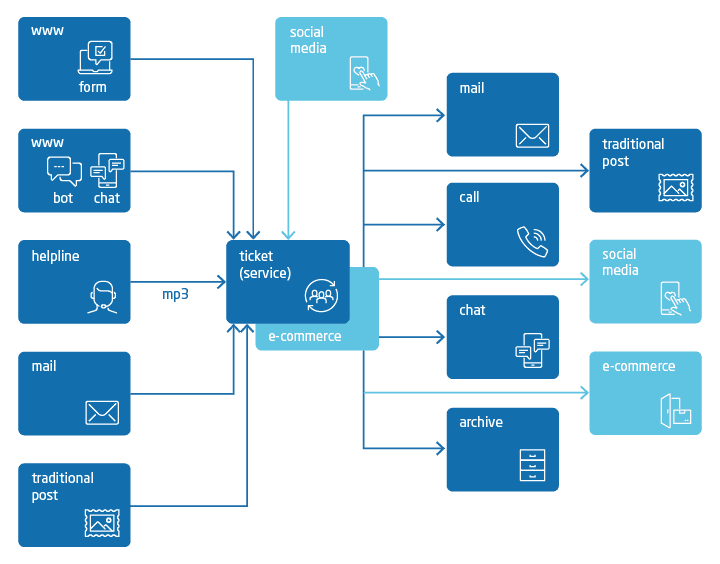
This is perfectly visible in the graph above – each arrow here indicates a potential interaction that needs to be handled – both from a technical and a process perspective. This cannot be done without a good technological platform, advanced integration with systems (logistics, CRM, e-commerce, courier companies, payment systems, e-banking…) but also without a call center team that is able to navigate smoothly in this complex world. Why “call center”? Because the phone is still the most effective and common tool and, very importantly, it facilitates managing emotions in communication. Each “I’ll dish the dirt on you on the Internet” can be easily converted by phone to “I got a 30% discount on the next purchase because they were late with the shipment, a nice company after all”.
Summary
As you may have noticed, the omnichannel is not as simple and easy as you might think. However, it is incredibly effective and definitely worth investing in – both time and money.
I wish all vendors that the omnichannel strategy is implemented and carried out successfully and that the amount of sweat, blood and tears spilled at the same time is as small as possible.
To us, the consumers, in turn, I wish as many brands as possible that are aware of the fact that the “omni” has to be present all the time, and not only sometimes
_________________________________________________________________________
The autor of the article is Bartłomiej Łatka.
